Welcome back!
On my previous post we discovered the backstory of our drink of the gods.
This time, I hope you are thirsty on knowledge because I want to talk to you about the elaboration process of Tequila!
Of course, now a days…the gods are not sending this spirit for us anymore, so its production is our responsibility.
Which takes me to the question:
How is Tequila made?
1. The Harvest
The agave is planted and maintained with water, fertilizer and plague control. However, it is necessary to wait between 7 and 8 years for it to be mature enough to be used. Which is why never ending agave fields are planted and you can find all kinds of sizes. If the agave starts to get dry, it means it is ready to be cut.
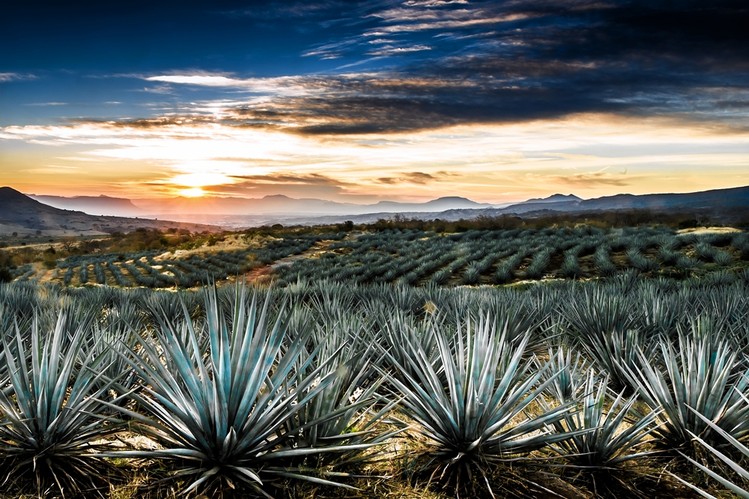
Once it is ready, a man who we call “Jimador” takes a very sharp tool named “coa” and starts to remove all the leaves, uncovering the heart of the plant called “piña” which means “pineapple” given the fact that the heart of the plant looks like one.
Piñas can weight up to 75 kilos and the Jimador can cut around 350 piñas daily. Which can be rather exhausting since they do this on the fields while enjoying some very hot Mexican weather.
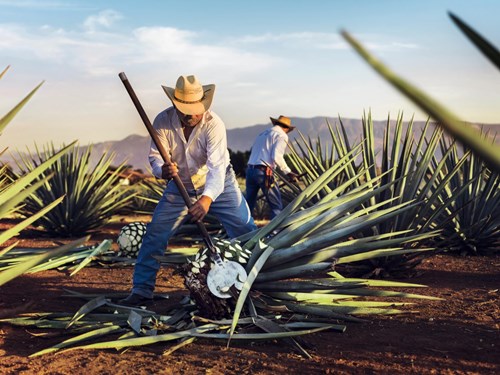
2. Cooking
Once the leaves are removed, it is time to cook the piñas and for this there are 2 methods…
-Traditional: Piñas are baked in brick or concrete ovens. They are closed and steam is injected into them, creating a pressurized environment. The temperature is raised to 60° C and left for 24 hours. Once done, it is left to rest for another 24 hours so that the flavors can get more accentuated.
-Modern: Piñas are introduced into stainless steel containers, where the hydrolysis of the sugars is carried out by cooking them with steam at a specific pressure for 4 hours, these containers stay on for around 18 hours a day at a temperature of approximately 105 ° C which allows them to produce a much larger quantity in a shorter amount of time.
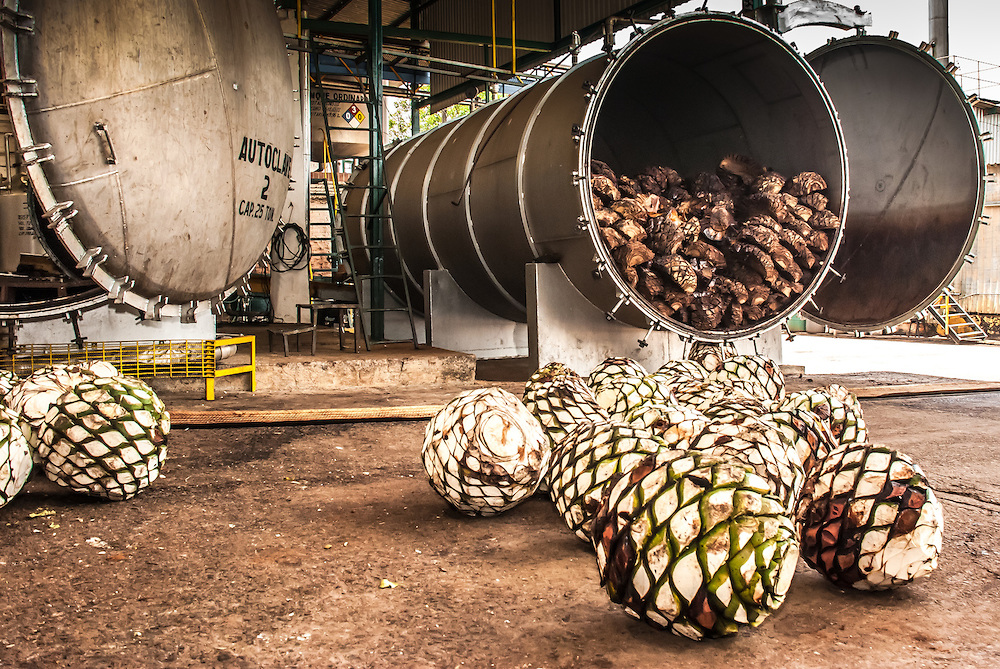
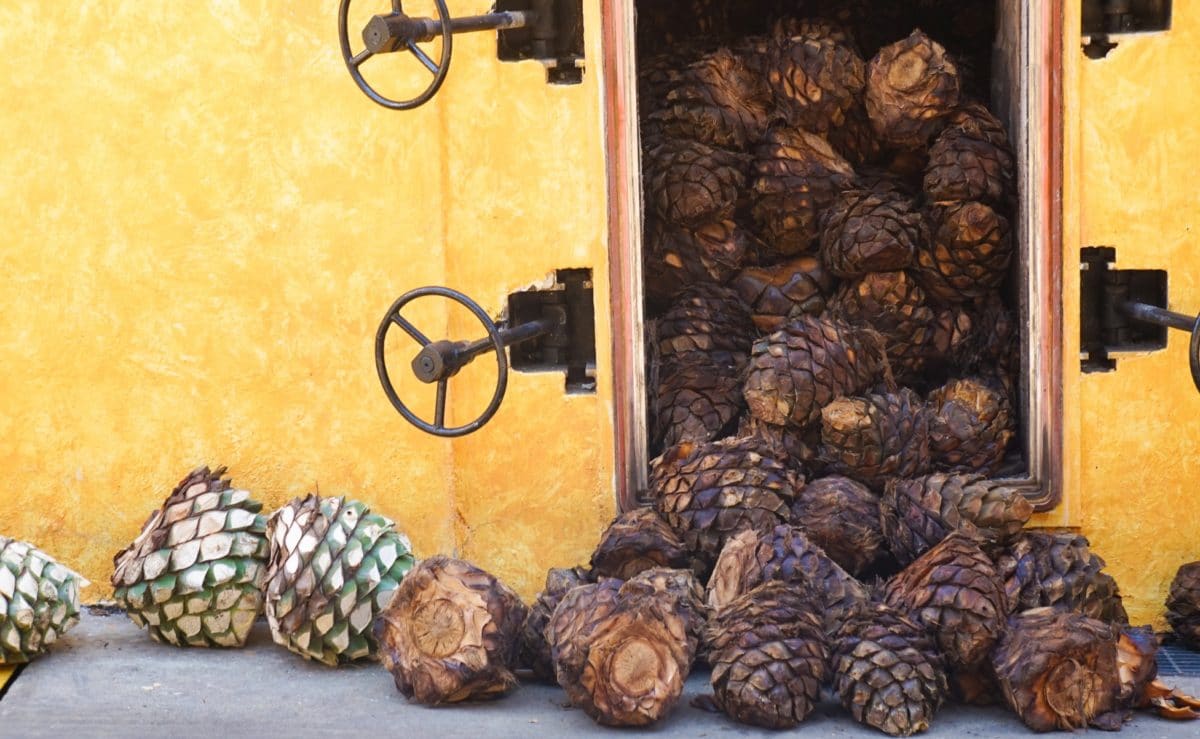
Is the flavor the same no matter the method?
Well, it is believed that when cooking using the traditional method, the textures of the agave are more subtle and smooth, while in the modern, being faster, only raw and coarse flavors can be extracted. These differences can be appreciated in some types Tequila.
3. Crushing or Grinding
Our next step, involves the cooked piñas going through a machine to reduce their size. Afterwards, piña fibers are passed through a mill where the juice is extracted. To facilitate said extraction and avoid losses of sugars in the fiber, pressurized water is injected directly.
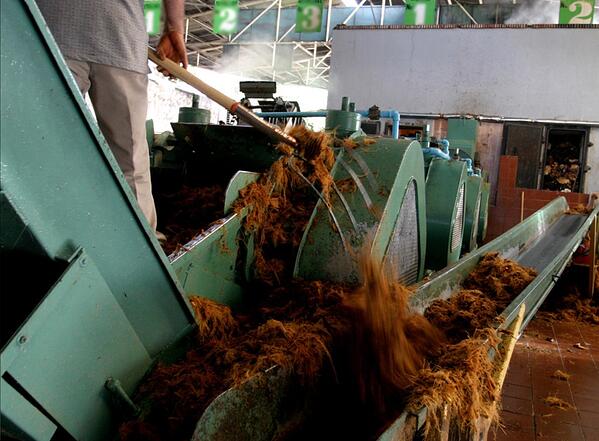
4. Fermentation
The juice collected is put into big tubs where yeast is added and then pumped in a fermentation room for 72 hours during which, the sugars are converted into alcohol.
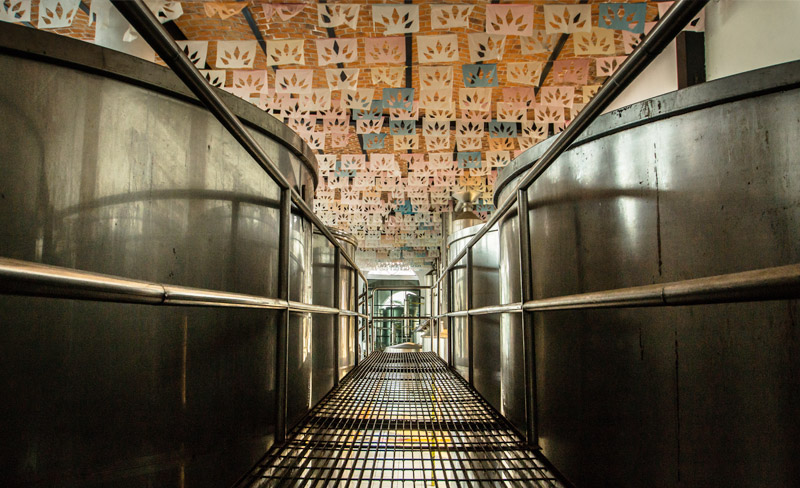
5. Distillation
Once the fermentation is finished, the juice is emptied into distillation columns resulting in the first distillation of “Ordinary Tequila” which has an alcohol grade of 55%. The spirit is then sent to storage.
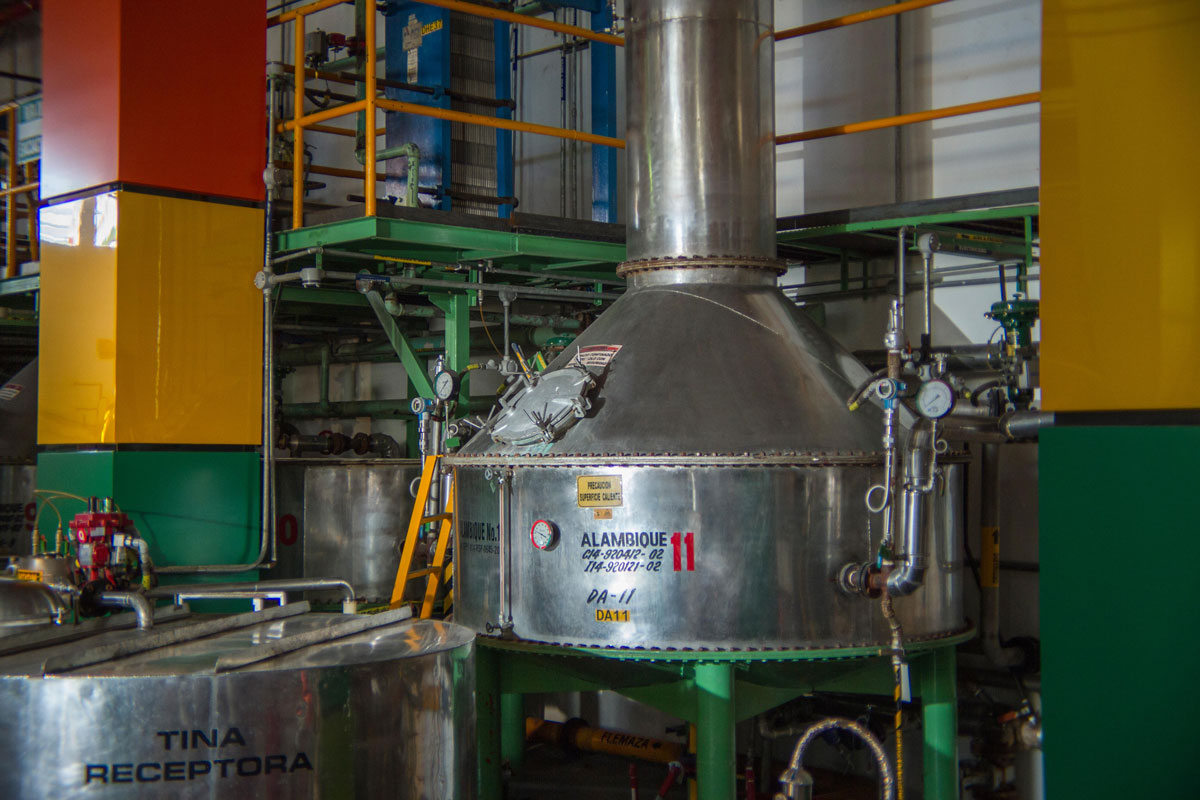
6.Storage and Dilution
The drink is stored in tanks from which it is eventually passed into different types of barrels depending on the type of tequila that wants to be obtained.
Rest time, type and volume of the barrel depends on our aimed final result.
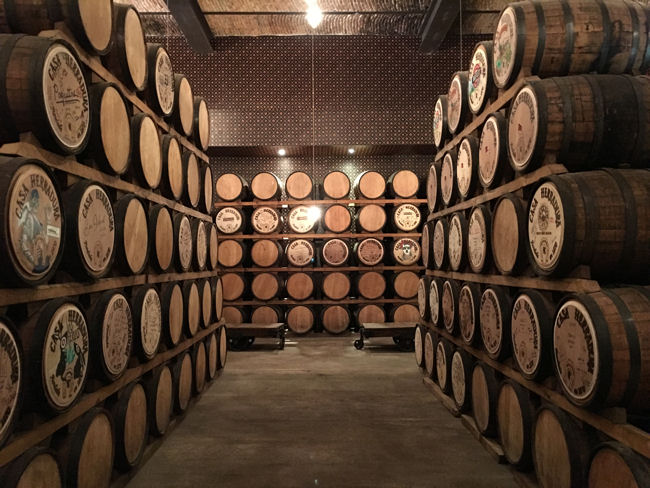
On the next post we will get to know the different types of tequila and their characteristics.
Yes, there are many and they keep getting better!
Salud & ’till next time.
Source:
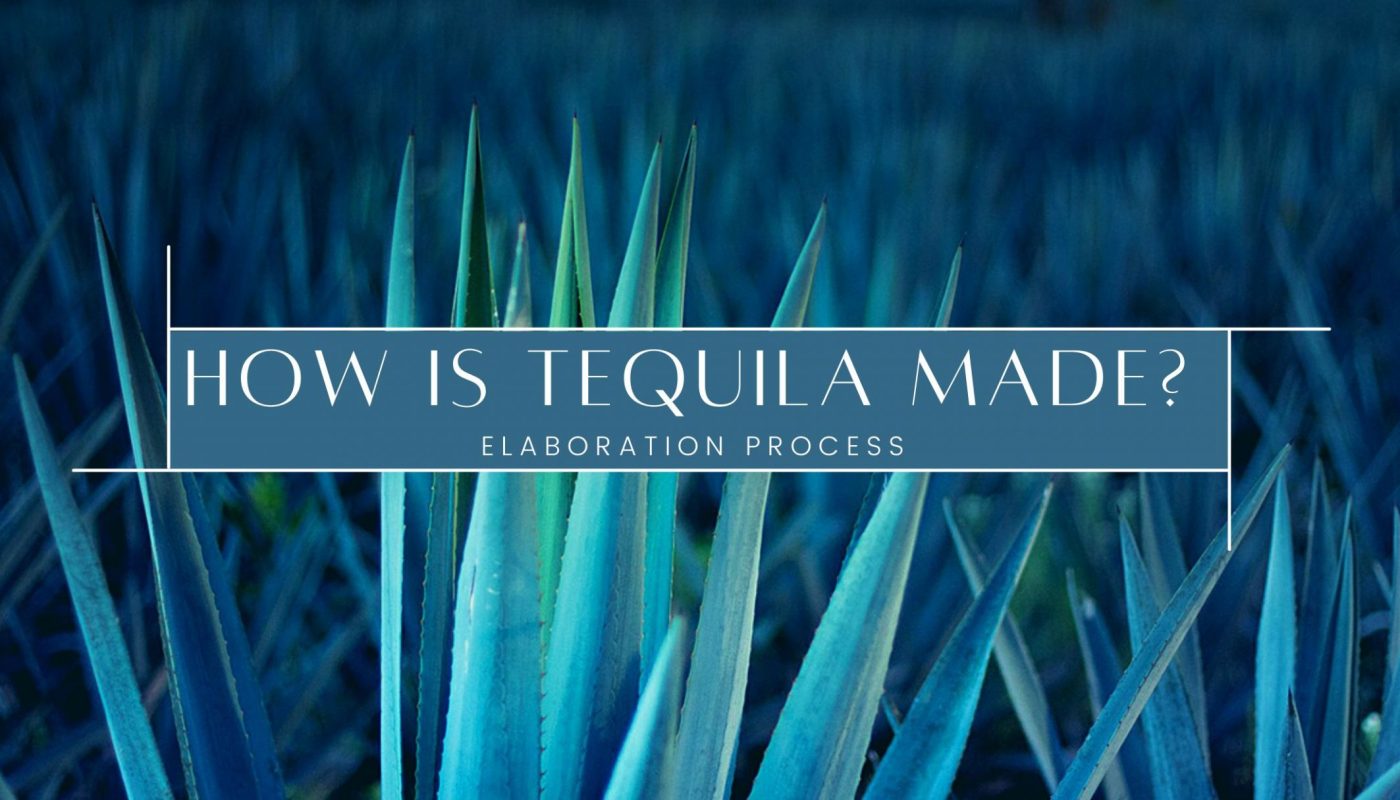



Wow, I did not realize agave and their pinas are so big!
Hi Adrian. Oh yes! Agaves and Piñas can be very impressive when seen in real life, plus, it is really fun trying to cut them 🙂 If you ever have the opportunity to take a tequila tour, please do!
I like the blogs they are very interesting. I’m really looking forward to the next one.
Thank you for your interest Claudia! The next post will be available soon 🙂
I even confused the agave with aloe haha. Never thought about how Tequila was made when I was drinking it! Interesting article. Thank you Paam!
Haha well I am glad you are not confusing it anymore, might’ve been dangerous! Thank you for your interest Bia, please stay tuned for the next post on types and classes of Tequila 🙂
Great inputs once again! I’d be also really interested in how to distinguish between low and high quality tequila but I am pretty sure you will also cover that during your next posts 🙂
Oh yes! distinguishing is actually very easy. I will talk about this in the future so follow along 🙂
Excellent article! Your post is essential today. Thanks for sharing, by the way.If you are looking for coupon codes and deals just visit coupon plus deals dot